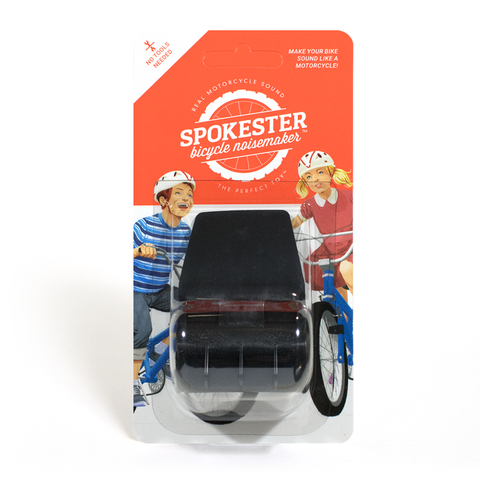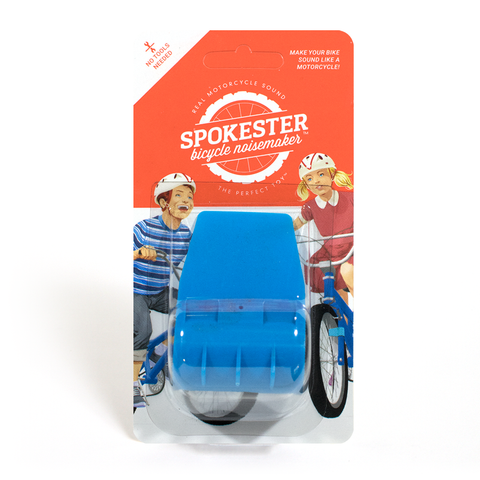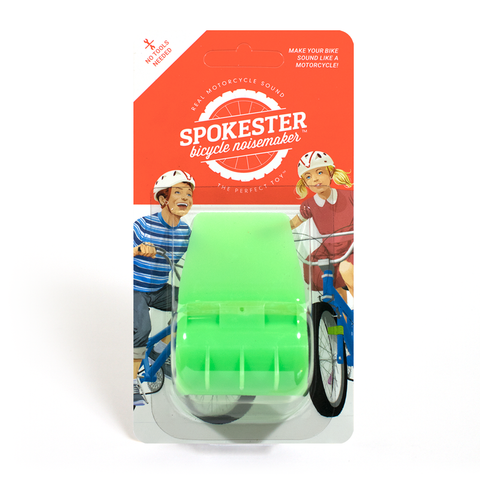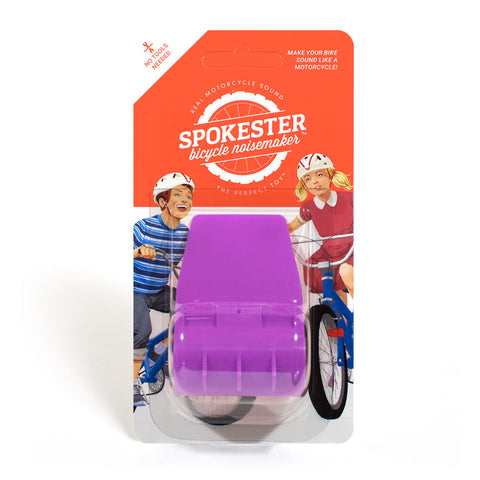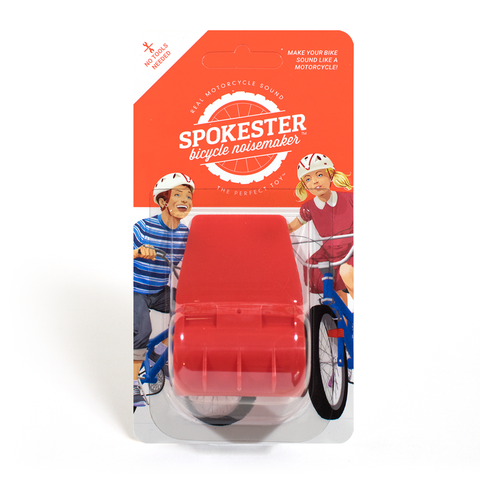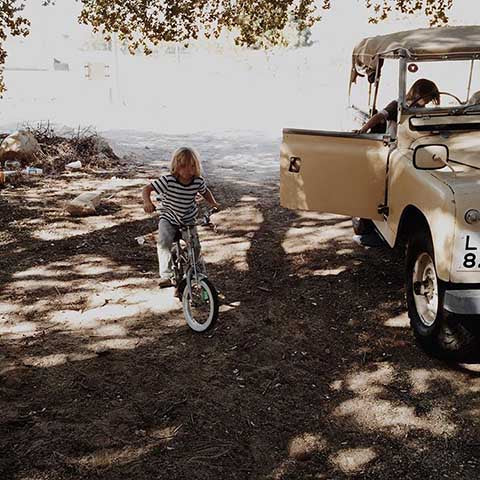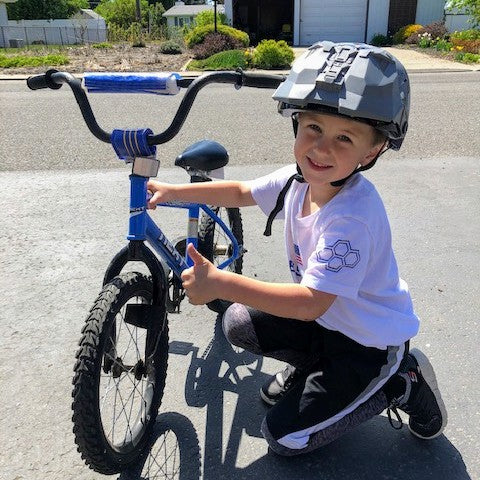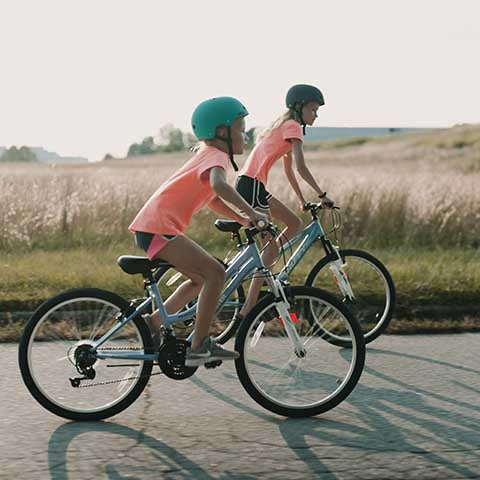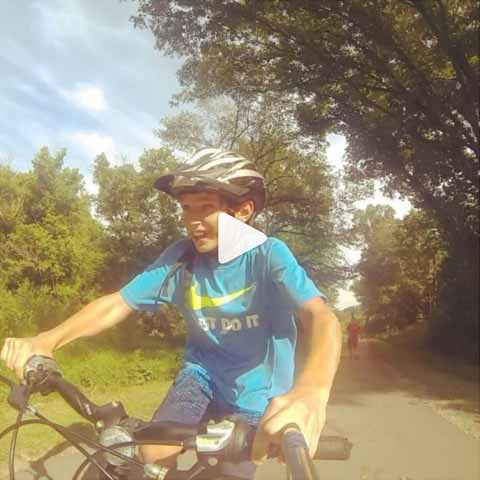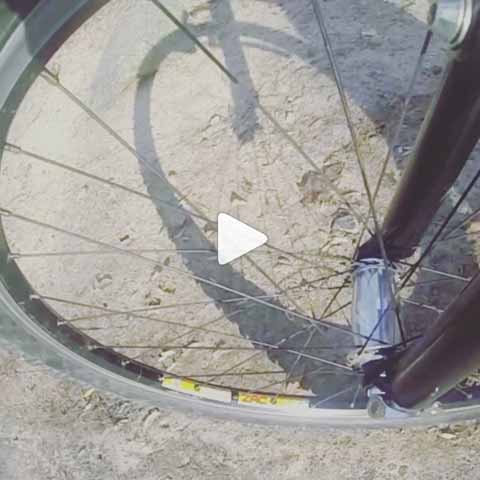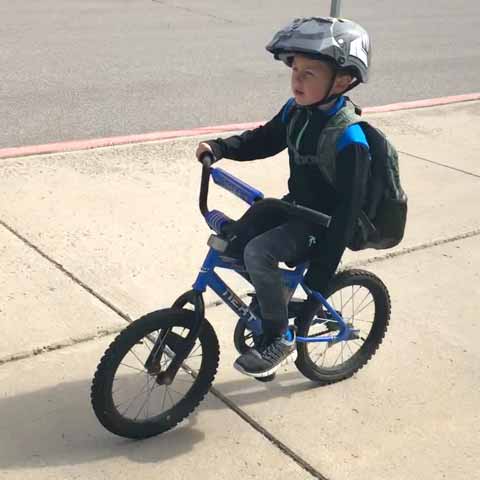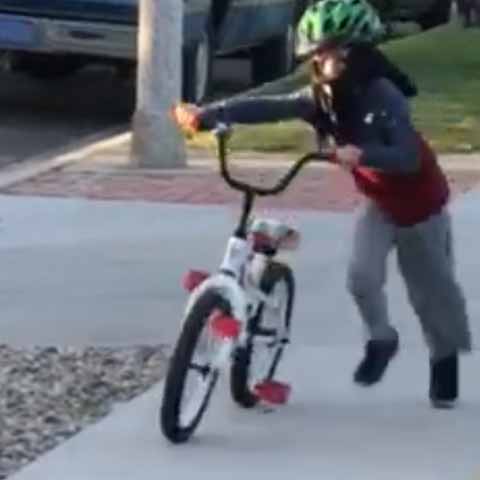Proactive Ways to Eliminate Your Kid's Inactive Days
We like to keep things upbeat here at Spokester. But, as hard-hitting investigative journalists posing as bike accessory manufacturers, every once in a while we need to tackle the tough stuff. Today, we'll look at a topic that scientists have been warning us about with more urgency each passing year. Something that will affect huge chunks of the population if it's not curbed quickly. A growing problem that needs to be addressed now otherwise it could have all kinds of serious and costly impacts to society at large.
If you guessed global warming, you're correct. But that's a discussion for a different day.
No, we're talking about the scourge of inertia among younger generations. As we mention in another post about children and exercise, roughly a third of children in the US today are considered overweight or obese. Not to paint too bleak a picture, but the American Academy of Pediatrics projects these kids have a 70% chance of staying this way through adulthood.
Those are some ugly stats. That's why organizations like the Centers for Disease Control and Prevention (CDC) and the World Health Organization (WHO) continue to strongly recommend at least 60 minutes of physical activity per day. That's at least one hour, and ideally a "moderate-to-vigorous" hour, which doesn't include using smartphones to strengthen thumbs. Unfortunately, studies from organizations like these consistently show that up to 80% of children aren't meeting this minimum.
Fear not, we're here to turn the tide! To give you the ammo you need to fight sedentary youth lifestyles, let's peel back the onion bit by bit. We'll start by reaffirming why staying active is important, then consider why it's so hard these days, and finally offer solutions you can use with your own tykes.
Benefits of Regular Physical Activity
To put it as simply as possible, the pros of moving around a lot are endless. Despite the high number of people who aren't active enough according to mountains of research, most at least understand what regular exercise does for you. In a nutshell, it helps:
- Strengthen muscles and bones
- Improve cardiovascular fitness
- Maintain healthy bodyweight
- Increase energy levels
- Keep all internal systems running optimally
Combine this with a good diet and it can do wonders for things like metabolism, sleep patterns, blood pressure, cholesterol, and defense against diabetes. Same thing applies to your kids. Cutting down on the junk food, Big Macs, soft drinks, and other processed crud is a great way to condition them to welcome more body-friendly snacks and meals.
If regularly reinforced, these habits coalesce into an overall healthy lifestyle in which the effects aren't just physical. Kids in better shape tend to be better focused in school, which leads to better critical thinking skills, which leads to better grades and test scores, which leads to better chances of them not living in your basement through their early 30s. Similarly, daily physical activity helps relieve the type of stress associated with things like school and pressing teenage social matters (which of course can be a matter of life or death at that age). And when it comes to boosting self-esteem as young pups, a healthy appearance goes a long way.
All makes sense, right? So just sit them down, logically explain how being active is great for their health and happiness (especially if you include bikes!), and crisis averted.
Oh, if only life were that simple.
Challenges to Healthy Young Lifestyles
Getting kids in the right frame of mind to embrace the downsides of inactivity so they avoid serious conditions like obesity isn't easy. Historically, a sampling of reasons for this has included:
- Children who may not be as inherently athletic may become self-conscious about their physical skills and want to avoid environments like gym class or rec sports where they could face embarrassment or teasing.
- This pattern can continue as their bodies begin to reflect a lack of activity, further impacting their confidence and stunting any desire to put themselves in vulnerable situations.
- Kids with busy parents may handle more and more family responsibilities as they get older, cutting down on free time for things like fitness.
- Taking care of academic demands that also increase with age is great in a lot of ways, but it may also come at the expense of taking care of themselves if they're not careful.
Today, kids face a double whammy. Not only is obesity a bigger problem than ever, modern realities make it harder to counter than ever. For example:
- Whereas old-school moms and dads are still comfortable with letting their kids play outside from dawn to dusk with little more than a "Be back by," many more cautious parents now use a much shorter leash, limiting children's options for activity.
- As they get older, some kids today have completely replaced the outdoors with gaming, social media, YouTube, and other forms of electronic leisure that weren't even a twinkle in their creators' eyes a generation ago.
- They're not enforcing the sit-and-reach or teaching the food pyramid in schools anymore. *Sigh*
The result, according to a bunch of science, is that "Total [physical activity] levels at age 19 are comparable to levels at age 60." Eeek. It's reasonable to believe most people in their right minds would like to reverse this trend.
But how?
Ways to Make Physical Activity an Everyday Event for Kids
Everything begins with regular movement as infants. This then morphs into more organized physical activity as toddlers. This progression makes it easier to introduce the concept of fitness—being active for the sake of being active rather than as a game or chore—into their routines as they enter their teenage years. Ideally, by the time they're young adults, healthy habits have ingrained themselves deeply enough that it's part of their lifestyles in some way, shape, or form.
The ultimate goal is to help make this a more enjoyable endeavor (for everyone). So, let's take a look at some of the things that you as a responsible parent can do to promote energy over ennui in your home gym.
Match Activity to Stage of Development
As impressive as preschoolers pumping iron would be, it's also unrealistic (not to mention incredibly dangerous). With young children, play to their built-in instinct to, well, play. Give them toys and introduce games that help develop their motor skills. Enjoy the fact that they like to emulate you at this stage and let them role play by "helping" with simple chores around the house. When they're ready, take them outside and let them hop on bikes meant for first-timers. We know we're biased here, but it's never too early to teach them the joys of riding.
As they get a little older, up the ante on age-appropriate toys and games. Throw organized sports into the mix. If that's of zero interest, get creative by doing things like scavenger hunts while walking around the neighborhood. This probably won't work by the time they go all teenage (although if you can pull this off, you're a god), so encourage them to do more adult-like exercise activities. Laps at the pool, shooting hoops, or time on the Peloton can help them hit that 60-minutes-a-day quota. No need to do it all at once if it's easier to break things up into smaller chunks.
Make Sure It's Enjoyable
Just as, if not more, important than finding an activity that's developmentally-appropriate is finding one that they enjoy. Even if it's only for a few years, sports offered by local rec councils are great for both kicks and laughs. This could go the team route with games like baseball, soccer, and lacrosse. Or, it could be through solo sports like tennis, gymnastics, and swimming. All of these are terrific ways for staying fit and making friends in the process.
Just remember, at this age it's not about the competition. Contrary to what some may say, "every kid gets a trophy" is in fact a good thing up to a certain point. Having fun and developing the right attitude helps them stick with it. Of course, the opposite is true as well. Of the 70% of kids who quit sports by age 13, most claim they simply don't enjoy it anymore. Let's not turn them off before they really get a chance to explore their potential by trying to relive your own glory days.
Cast a Wide Net
Stick-and-ball stuff can sometimes seem like the default, but the fact is that not all children are into sports. And that's perfectly okay! But, that doesn't give them license to sit around all day staring at a screen. If this is the case—and even if it's not, for that matter—explore other options that put that pent-up energy to use. Biking is a super-healthy activity for kids, even if it's not competitive mountain biking or road racing. Consider things like martial arts, hiking, or gardening. That's right, gardening. There's no rule against sneaky ways to get them to help with the housework.
There's also no rule that says you always need to choose what to do. Give everyone a turn at picking an activity. As with sports, the more they enjoy an active pursuit, the more they'll stick with it and make fitness a part of their everyday lives (whether they realize it or not). It's also important to be patient as a parent. Your little ones may instantly fall in love with a particular hobby, or it may take a while to find that Cinderella fit. But they'll get there.
Be a Role Model
"Do as I say, not as I do" may work in some cases, but when it comes to youth fitness, this borders on hypocrisy. If your goal is to get them burning calories, then keep your own fire going! Younger children pick up everything—everything—so use that to your advantage. If you don't, you're just setting yourself up for a showdown when they get old enough to support a giant chip on their shoulders and throw it back in your face.
Don't panic, though. No one's recommending that you qualify for the Boston Marathon. There's a difference between single-digit body fat and setting an example. If you make an effort at regular physical activity and show them you enjoy it, they're more likely follow suit. That said, it does help with that dad bod, too.
Get Others Involved
Hopefully this is obvious by now, but running around doesn't have to be a solitary pursuit. While some people do enjoy the alone time that exercise, walking, or similar activities can offer, others enjoy staying in shape more when they buddy up. This is a great way for the family to get in some Q.T., which is also another opportunity for you to put on that role model cape. Younger children in particular want their parents to play along, which is a nice little window for you to exploit before adolescent apathy kicks into high gear.
When this does happen and you all of a sudden are on the receiving end of more eyerolls than bouncy balls, have them invite their friends. Family rides, campouts, or trips to the batting cage may be even more appealing when BFFs are involved. Plus, this is great for developing social skills when young and relationship-building as they get older. That's what we in the business call a win-win.
Build It into the Schedule
Analogy time. For Baby Boomers back in the day (like, way back), seatbelts were more or less optional. Today, more recent generations don't even think about it for the most part: open door, sit down, strap in. That's because we were taught to do this from the moment we said goodbye to the baby seat and entered big boy and girl territory.
If you integrate physical activity into your regular routine, there's a greater likelihood of them making it habitual. "It's Sunday, time for a hike in the park, right Mom?" You see where we're going with this. To make it even easier, start small. For instance, taking the dog around the block each day is a great way to teach responsibility while subconsciously encouraging daily exercise. You can even make it a conscious effort by putting things in writing before you get the animal—i.e., we buy it, you walk it. Not sure how well this would hold up in court, but point made.
Limit Screen Time
That same American Academy of Pediatrics that's predicting the ghastly ballooning of our citizens also recommends a daily maximum of two hours of screen time. This includes TV, computer, gaming, i-this or that, etc. Disconcertingly, this is at odds with the seven your average child spends doing these things. Yikes.
There are different ways to approach this. Create indoor areas with things like play kitchens/setups for young kids, ping pong for older ones, weights or cardio machines for budding athletes, and so on. Keep TVs out of their bedrooms until they're older and used to (and enjoy) being active. Set expectations for time without handheld devices. And if your child's phone has somehow fused directly onto his or her palm, then propose apps and games that incorporate exercise or augmented reality to combine fun with fitness. Hey, every now and then a compromise can be a win.
Encourage Them Along the Way
We'll make the last one short and sweet. Start early and support them as they go. Just like you gain satisfaction from a boss's pat on the back for a job well done, they enjoy the same thing from you. It only encourages them to keep it up! From jump ropes to jump shots, doing this at all ages is important for their development and self-esteem. Even if you need to use it as a carrot—for example, an opportunity to take a break from yard work—at least it gets them in the groove. However you approach it, acknowledging their effort and building their confidence leads to small changes that add up to healthier well-being over time.
Whether you're a daily dog walker or Mr. Universe prospect, regular physical activity is one of the most important things you can do to maintain a healthy lifestyle. For kids, this means making it a priority early and often in ways they enjoy so that it becomes second nature.
As with anything else involving your children (particularly if you want them to actually do something), don't push it! Not only could that backfire and completely turn them off of sports, the great outdoors, or this kind of activity in general, but it overdoing it could lead to injury. And nobody wants that. Including your health insurance provider.
So kick around some options, find something that sticks, and don't be shy with the high-fives. Exercising a little encouragement can go further than you might imagine!
← Older post Newer post →
